Warren House was built as a spite project by William Chifney in the 1830s, highlighting the bitterness and animosity which existed between William and his 2-years younger brother Sam. The younger brother lived in Cleveland House, built for him around 1820 by the Duke of Cleveland, Lord Darlington, which was adjacent to William's house, but grander in appearance. William, who trained the 1812 2000 Guineas winner for the 3rd Lord Darlington, had his house demolished and built the new Warren House with no expense spared, with the primary aim of blocking the views of the Heath from Cleveland House. On Monday 23rd June 1834 William sold the majority of his racing stud at Tattersalls, probably to raise sufficient cash to finance his grand project. That sale raised 1532 guineas and included ROWTON (SR 2019), 1829 St Leger winner, which he had purchased from Honourable Edward Petre, and which sold for 1000 guineas at the 1834 sale. William spent so much on the project that it left him almost penniless, and in 1841 he had to sell his beloved Warren House to John Francis Clark of Fairstead House, Newmarket, an architect and former racing judge at Newmarket. Eventually Clark sold it to Prince Batthyany.
For over 4 centuries racing has been staged in Newmarket, but how have the racecourses evolved from an initial starting point at Fleam Dyke Pumping Station, some 8 miles from the town, with a winning post barely 200 metres from the town centre, into two world recognized, excellent racecourses and a universal acceptance that Newmarket is the Headquarters of racing?
To access an interactive racecourse map showing over 50 individually named racecourses CLICK HERE. The map will enable you to:-
1. Determine when extended races over 8 miles, 6 miles and 4 miles began to be replaced by the courses now visited by thousands annually;
2. Consider how the challenge of crossing the Devil's Dyke was overcome;
3. Contemplate why the town no longer has a steeplechase course despite having at least 5 courses during the past 2 centuries;
4. Examine the practicalities of having up to 48 starting posts and winning posts;
5. Appreciate that it was not financially viable to have an open racecourse spread widely across the heath, with a finishing post barely 200 metres from the town centre;
6. Research how and why the Cambridgeshire Handicap has been contested over 3 different courses.
NOTE: The map does not make mention of 2 particular courses:-
(i) Sefton Course (also known as the Cambridge Road Course)
Source: 1970 Raceform. Used from 1959 to 1975.
(ii) New Circular Course
The Circular Handicap was run on Friday 29th October 1875 on the New Circular Course of about two miles.
Source: London Standard (30th October 1875): ''the horses started near the Turn of the Lands, ran back way of the Cambridgeshire Course towards the Ditch, and afterwards proceeded down the side of the Tan Gallop, and turned into the Rowley Mile near the Bretby Stakes starting post, finishing at the stand at the end of the flat. Except in the hollow near the Cambridgeshire start the runners should have been visible all the way if the sky had been bright and clear''.
Another report hoped that the Circular Handicap would become a feature in future programmes, as it would be contested in front of the new grandstand which would be completed in about a year and would be able to accommodate thousands.
(I am grateful to Tim Cox for bringing attention to these 2 courses.)
Enjoy researching the intriguing history of Newmarket and its many racecourses.
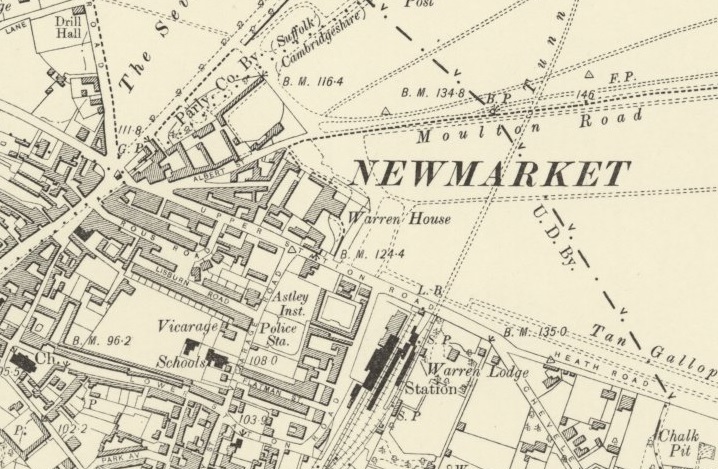
1834-1841 William Chifney
William Chifney, eldest son of Sam Chifney senior, was born in 1784 and was 2 years older than brother Sam. Sam was an accomplished jockey who won 9 English Classics, including the 1818 and 1820 Epsom Derby's on SAM (SR 2060) and SAILOR (SR 2029), but William was a trainer of some repute. He trained 3 Derby winners, an Oaks winner, a 2000 Guineas winner and 3 Ascot Gold Cup winners, but like many trainers and jockeys of his day, he hit on hard times and, in 1841, he had to sell his house, land and offices for £4000 (equivalent to £425,000 in 2020), and one of his creditors was George Samuel Ford. Will died, aged 78, on 14th October 1862 at Pancras Square, London.
1812 Newmarket 2000 Guineas CWRW (SR 1924) 7/1 owned by 3rd Lord Darlington, trained by William Chifney and ridden by Sam Chifney junior
1818 Epsom Derby SAM (SR 2060) 7/2 owned by Thomas Thornhill, trained by William Chifney and ridden by Sam Chifney junior
1819 Epsom Oaks SHOVELER (SR 1861) 2/1 fav owned by Thomas Thornhill, trained by William Chifney and ridden by Sam Chifney junior
1823 Ascot Gold Cup MARCELLUS 6/4 fav owned by Earl of Darlington, trained by William Chifney and ridden by Will Wheatley
1827 Ascot Gold Cup MEMNON 1/2 fav owned by Earl of Darlington, trained by William Chifney and ridden by Sam Chifney junior
1829 Ascot Gold Cup ZINGANEE 2/1 fav owned by 6th Earl of Chesterfield, trained by William Chifney and ridden by Sam Chifney junior
1830 Epsom Derby PRIAM (SR 2066) 4/1 fav owned and trained by William Chifney and ridden by Sam Day
1841-1852 John Francis Clark, George Bulkeley
In 1841 Warren House was bought by the original builder and architect John Francis Clark of Fairstead House, Newmarket, a former racing judge at Newmarket, and he sold it to George Bulkeley who remained the owner until 1851. It was then sold to Prince Batthyany. Gustavus Theodore Anthony, Count (later Prince) Batthyany, was a Hungarian but became British by Act of Parliament in 1838. He registered his colours in 1837, was elected to the Jockey Club in October 1858 and appointed Henry Bradley as his first private trainer at Newmarket.
1852-1860 Henry Bradley, Prince Batthyany
In the 1858 Kelly's Directory Henry Bradley is listed at Warren House. Henry Bradley, a Londoner, was the first private trainer of Prince Batthyany in Newmarket. Previously the pair operated from stables based at Downs Cottage in Epsom but in 1852 it was moved to Newmarket, but while in Epsom Bradley trained the winner of the 1847 Royal Hunt Cup. He was a Londoner. Henry Bradley died on 10 October 1861 aged 56, leaving a widow and large family.
1861-1883 John Dawson, Prince Gustavus Batthyany
John Dawson, son of George and Jean (nee Alison) Dawson, was one of 17 children who were brought up in racing stables, many of whom then forged their own careers as trainers. John, born on 16th December 1827, was one of the couples later children, following on from Thomas (born 1809), Mathew (born 1820) and Joseph (born 1825) and enjoyed a childhood in his father's Stamford Hall Stables in Gullane, East Lothian, later moving to Newmarket. He worked for his brother in Middleham, Yorkshire, later marrying Grant Peddle on 30th December 1855 in Edinburgh before he took up a training position at Roden House Stables at Compton, Berkshire, an area close to Lambourn and now known as the valley of the racehorse, celebrating his first major winner in 1859 when Bel Esperanza won the Lincoln.
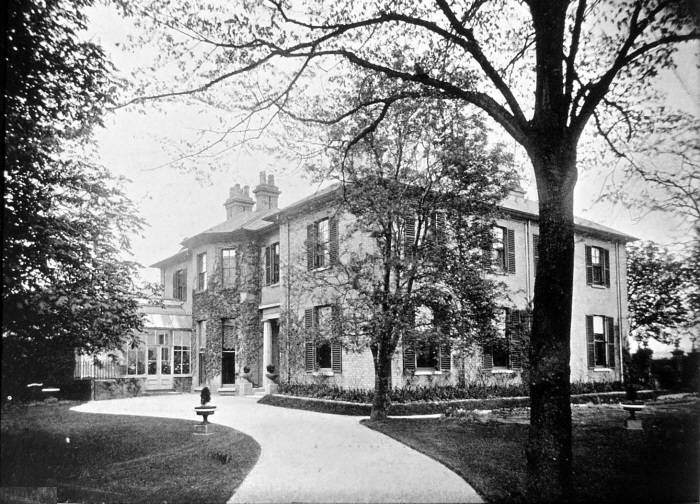
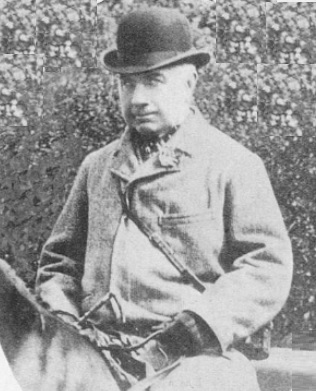
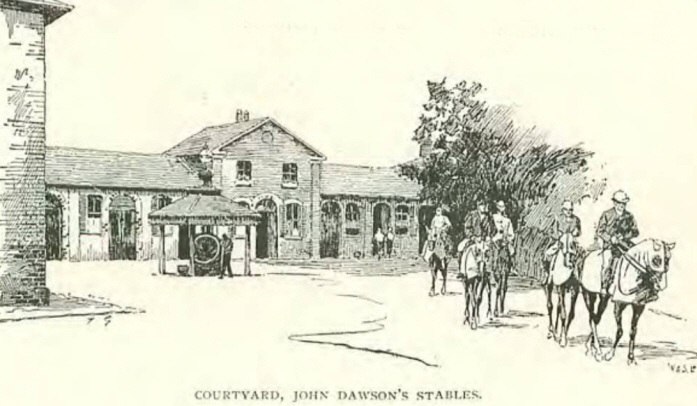
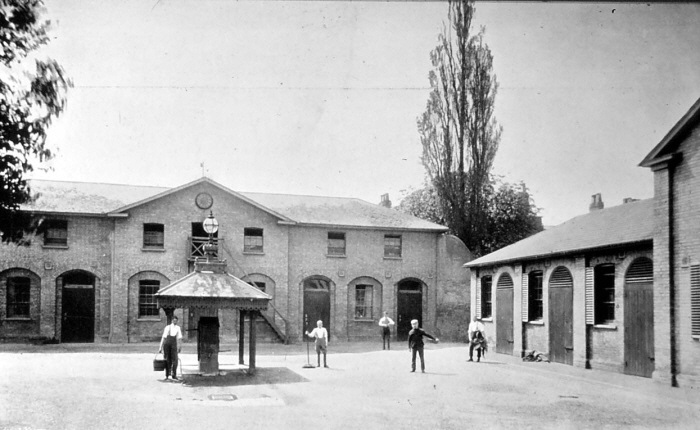
In 1875 he won the Epsom Derby for Gustavus Batthyany with GALOPIN (SR 2075), the 2/1 favourite ridden by Jack Morris. The next year he won 2 Classics with PETRARCH (SR 1935) for Viscount Dupplin, firstly landing the 2000 Guineas when ridden by Harry Luke, and later winning the St Leger when partnered by Jem Goater. In 1883 Prince Batthyany died and could have spelt trouble for Dawson, but he was able to attract new owners and keep his business afloat. His final Classic was registered in 1880 in the 1000 Guineas with ELIZABETH (SR 1874) owned by Mr T E Walker and ridden by Charles Wood.
1862 Lincoln Handicap SUBSURBAN (7/1) owned by Prince Batthyany, trained by John Dawson and ridden by Edwards
1867 Lincolnshire Handicap VANDERVELDE (33/1) owned by Count Batthyany, trained by John Dawson and ridden by H Covey
1874 Fern Hills Stakes (now the Sandringham Stakes) at Royal Ascot GALOPIN (6/4 fav) owned by Prince Gustavus Batthyany, trained by John Dawson and ridden by Fred Archer
1874 New Stakes (now the Norfolk Stakes) at Royal Ascot GALOPIN (7/4 fav) owned by Prince Gustavus Batthyany, trained by John Dawson and ridden by Jack Morris
1875 Epsom Derby GALOPIN (SR 2075) 2/1 fav owned by Prince Gustavus Batthyany, trained by John Dawson and ridden by Jack Morris
1875 Fern Hill Stakes at Royal Ascot GALOPIN (1/2 fav) owned by Prince Gustavus Batthyany, trained by John Dawson and ridden by Jack Morris
1875 Middle Park Plate at Newmarket PETRARCH (100/8) owned by Viscount Dupplin, trained by John Dawson and ridden by Jem Goater
1876 2000 Guineas PETRARCH (SR 1935) 20/1 owned by Viscount Dupplin, trained by John Dawson and ridden by Harry Luke
1876 Prince of Wales Stakes at Royal Ascot PETRARCH (2/1) owned by Viscount Dupplin, trained by John Dawson and ridden by Harry Luke
1876 Doncaster St Leger PETRARCH (SR 1935) 5/1 owned by Viscount Dupplin, trained by John Dawson and ridden by Jem Goater
1878 Cesarewitch JESTER (20/1) owned by Mr R C Naylor, trained by John Dawson and ridden by Harry Luke
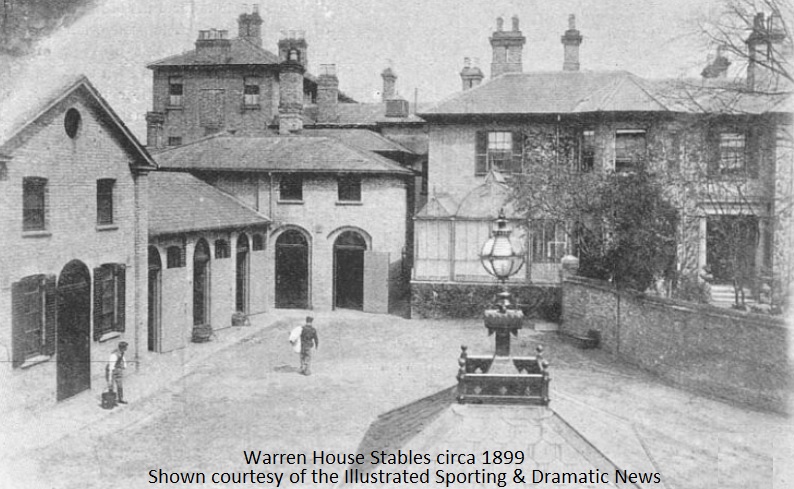
1880 Coronation Stakes L'ECLAIR (10/1) owned by Prince Batthyany, trained by John Dawson and ridden by Harry Luke
1881 Fern Hill Stakes GOLDEN EYE (1/2 fav) owned by Mr C Alexander, trained by John Dawson and ridden by Fred Archer
After the death of Gustavus Batthyany on 25th April 1883 John Dawson had to look to strengthen his string by attracting new owners.
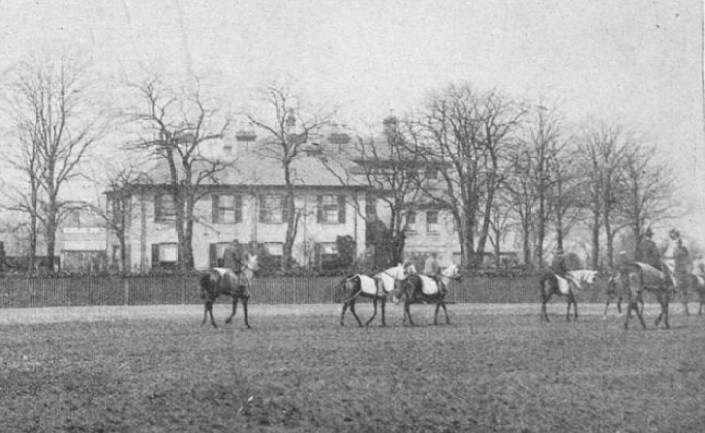
He had an impressive CV, with 3 Classic successes and numerous victories at Royal Ascot to his name, so it was no surprise that R C Naylor and Sir Robert Jardine were joined by Eustace Loder, General Owen Williams and Mr C Alexander. However, it was not all plain sailing for Dawson, as he lost the horse of a lifetime as a consequence of Batthyany's death. At that time the Count owned St Simon, and the rules of racing prevailing in that period of history was that all entries into the Classics had to be cancelled. St Simon was sold to the Duke of Portland and moved to Heath House Stables where John's brother Mat trained. In January 1884 Fred and Nelly Rose had a son, William, but he died at birth, while in early November 1884 Helen Rose Nelly and Fred Archer had a daughter, naming her Nellie Rose, but tragically Helen Rose died shortly afterwards. Dawson landed his fourth, and final, Lincolnshire Handicap win in 1889 with Wise Man owned by Sir Robert Jardine and ridden by Tommy Loates, and a year later the 25-box Warren House stable was purchased by Wallace Johnstone, who was happy to appoint John Dawson as his private trainer.
1886 Fern Hill Stakes CALLER HERRIN (4/1) owned and trained by John Dawson and ridden by Jimmy Woodburn
1889 Lincolnshire Handicap WISE MAN (8/1) owned by Sir Robert Jardine, trained by John Dawson and ridden by Tommy Loates
1890-1900 Wallace Johnstone and John Dawson
After much success in his early years training initially for Prince Batthyany and then a whole host of different owners, John Dawson returned to life as a private trainer for Wallace Johnstone in 1890. As well as a number of Royal Ascot successes, notably with Best Man who achieved dual success, he was able to add to his Classic successes in 1898 when DISRAELI (SR 1967) landed the 2000 Guineas for Johnstone, but within two years Wallace Johnstone put his horses in training up for sale at the December 1900 sales, leaving Dawson in a state of flux and suffering from poor health. He decided to retire in 1902, handing control of the stables to his son George. John Dawson died on 13th May 1903 and was buried in Newmarket cemetery, while his granddaughter Nellie Rose continued to live at Warren House.
1892 Windsor Castle Stakes at Royal Ascot QUEEN'S PARDON (100/15) owned by Sir Robert Jardine, trained by John Dawson and ridden by Fred Webb
1894 Queen Anne Stakes BEST MAN (4/5 fav) owned by Wallace Johnstone, trained by John Dawson and ridden by Fred Webb
1894 King Stand Stakes BEST MAN (5/4 fav) owned by Wallace Johnstone, trained by John Dawson and ridden by Fred Webb
1896 Windsor Castle Stakes at Royal Ascot MONTEREY (4/1) owned by Wallace Johnstone, trained by John Dawson and ridden by Allsopp
1898 2000 Guineas DISRAELI (SR 1967) 100/8 owned by Wallace Johnstone, trained by John Dawson and ridden by Sam Loates
1902-1913 George Dawson, son of John Dawson
John Dawson senior decided to retire at the end of the 1902 season, handing training responsibilities at Warren House Stables to his son George. Another son, John Dawson junior, was already a highly accomplished trainer in St Albans. After John Dawson senior died on 13th May 1903 George continued to train at Warren House.
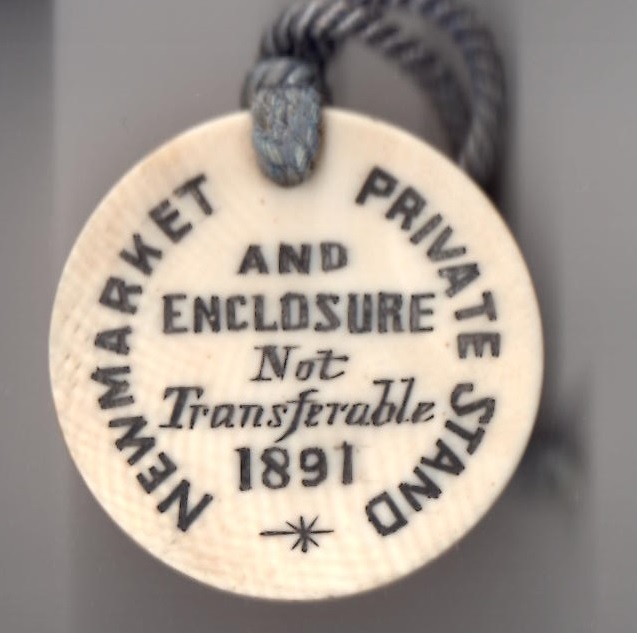
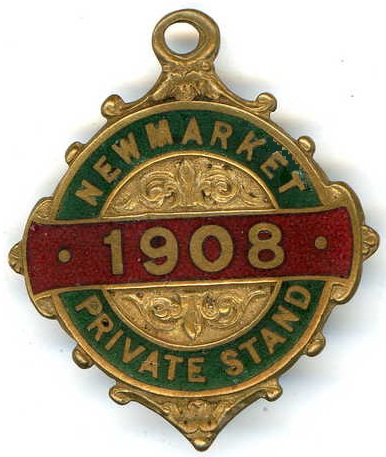
1914-15 Jack Jarvis, Mr A E Barton
One of the best known trainers to train at Warren House stables was Sir Jack Jarvis, later famous for sending out Blue Peter (SR 2089), owned by the 6th Earl of Rosebery and ridden by Eph Smith, to win the 1939 2000 Guineas and Epsom Derby, but was denied the Triple Crown because the St Leger was cancelled due to the outbreak of the Second World War. Sir Jack Jarvis, christened John Layton Jarvis, was born into a racing family on 27th December 1887 at Waterwitch House in Newmarket, the third son of William Arthur Jarvis. He became an apprentice at his father's stables in 1902 and rode his first winner when he was just 14 years of age. He was a successful jockey, winning the 1902 Cambridgeshire on Hackler's Pride, followed by the 1905 Ayr Gold Cup on Kilglass. However, his weight denied him the chance of continuing as a Flat jockey and he transferred to National Hunt racing, but retired in his early 20s to work as assistant trainer to his father for the next 5 years. When the First World War broke out in 1914 Jack, aged 27, took over as private trainer to Mr A E Barton at Warren House stables, although by 1916 Jack was serving in the Tank Corps. He later moved on to Park Lodge Stables where he was highly successful.
Aug-Sept 1915 & Autumn 1916-March 1917 Frank Barling
Francis William Bonnor Barling, son of a Gloucestershire farmer Frederick Barling, was born in 1869 in Ross-on-Wye and qualified as a Vet in Rugby before opening a practise in Monmouthshire. At the age of 32 he became interested in building up a stud of shire horses, but in 1906 he decided to launch his training career, starting at Hodcott House, West Ilsley. His biggest win whilst at West Ilsley was Subterranean, 11/2 winner of the 1912 Liverpool Spring Cup when owned by J Ellis Potter and ridden by W Huxley. After being commissioned in the AVC he then took out a short lease at Warren House, Newmarket between August and September 1915 before he returned to West Ilsley. He spent a further period at Warren House from August 1916 until March 1917. At this stage of his career he was a nomadic trainer, spending time at Beaufort House from April 1917, then departing for Falmouth Lodge from February 1918 where he trained for Lord Glanely, 1st Baron Glanely. He reached the pinnacle of his career when he trained the unexpected winner of the 1919 Epsom Derby Grand Parade (SR 1968) at 33/1 when ridden by Fred Templeman. It proved to be a spectacular year for both owner and trainer, recording 7 wins at Royal Ascot, all of which are listed in the Falmouth Lodge/Pegasus section of this site. Frank left Falmouth House when Lord Glanely purchased La Grange from George Blackwell in April 1920, but he then suffered a period of ill health which forced him to temporarily retire. However, once on the road to recovery he began enjoying farming again, and then yearned to return to the training ranks, spending time at Sefton Lodge from August 1923 until December 1924. Between 1925 and April 1926 he returned to La Grange, although his relationship with Lord Glanely deteriorated and Frank took out an extremely short lease at Saville House prior to renting Kremlin House from Joe Butters in August 1926, later purchasing it in 1927. In the latter part of his training career he was assisted by his son Geoff, especially during periods when his health was poor. During the time he operated from the various stables listed, he was also linked with a private stable from Primrose Cottage, passing it on to his son, Geof Bonnor Barling, in September 1934. Frank died in Newmarket on 17th April 1935.
Summer 1917-early 1918 Robert Orton, Mr A E Barton
Robert Orton was a Londoner, born in Bayswater on 6 March 1865, the son of a coachman, and rode on the Flat in England and later in Ireland under both codes. He then trained in Ireland from 1902 at Abbey Lodge, Clonsilla. He held a licence on the Flat in England from 1906 to 1909 in Wiltshire for Mr T W Pratt, Mr H J Hunt and others. Between Summer 1917 and the early part of 1918 he trained at Warren House for A E Barton.1918.
1918-July 1919 Sir Alec Black, George Manser
Warren House Stables was owned by the shipping magnate Sir Alec Black during the latter part of the First World War. He purchased The Panther at Newmarket Yearling sales in 1916, later employing George Manser, son of William Manser who had trained at Cadland for over 40 years. The Panther was the top rated two-year-old in 1918, confirming that early promise in 1919 by winning the 2000 Guineas when trained by George Manser and ridden by Richard Cooper. On the back of his 2000 Guineas success The Panther was made the 6/5 favourite for the 1919 Epsom Derby, but was unplaced behind the shock 33/1 winner Grand Parade (SR 1968). George Manser left to train in Spain after the War.
1919 2000 Guineas THE PANTHER 10/1 (SR 1907) owned by Sir Alec Black, trained by George Manser and ridden by Richard Cooper
Richard Charles 'Charlie' Marsh was born at Lordship Farm on 6 July 1882 and remained with his father until he was in his early twenties. He then went to Hungary for several years where he assisted John Reeves. In April 1907 he became private trainer to Mr W Brodrick Cloete at Hare Park at Six Mile Bottom and prepared his Cherimoya to win the 1911 Oaks when ridden by Fred Winter snr. From October 1913 he leased Beaufort House stables to train publicly, including some of Brodrick Cloetes horses, remaining there until 1914. From August 1914 'Charlie' Marsh served in the 3rd Hussars in which he was promoted Captain in early 1917. He was severely wounded in France. Demobbed in April 1919 and staying at Egerton House he looked for a post as a public or private trainer. Briefly from July 1919 he trained privately for Mr A E Barton and Sir Alec Black at Warren House, replacing George Manser.
September 1920-November 1927 George (Fred) Leader
George Frederick Leader, second son of renowned trainer Tom Leader, was born at Wroughton, Wiltshire in 1881. He became an apprentice for his uncle, William Leader, at Barcelona House in Wroughton, before becoming his assistant trainer, later travelling to America to gain further experience with Andrew Joyner. After a spell at Warren House Stables from September 1920, George (Fred) Leader transferred to Primrose Cottage Stables in December 1927, acquiring it from Frank Curzon and replacing John (Jack) Watts, although he was still listed in the Newmarket Telephone Directory as resident at Warren House and had the telephone number Newmarket 24; how times have changed. He was the last trainer at Warren House. In August 1929 Fred's apprentice, Tommy Lowrey, fractured his collar bone riding Fingle Bridge in the Stewards Cup at Goodwood, when the horse unexpectedly fell. Fred remained at Primrose Cottage Stables until his tragic death on 13th June 1933, when he and his wife were killed in a motoring accident whilst returning from Ascot races where they had enjoyed watching their horse, Gainslaw, win the Ascot Gold Vase.
Warren House was demolished in 1935 and was used by the military during World War II, with some locals remembering salvaging bungy cord and parachute silk from the site a couple of years after the War had ended. It is now site of posh apartments at bottom of Heath.
GALOPIN (1875 Epsom Derby)
DISRAELI (1898 2000 Guineas)
PETRARCH (1876 2000 Guineas, St Leger)
THE PANTHER (1919 2000 Guineas)
ELIZABETH (1880 1000 Guineas)



